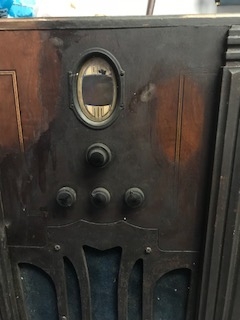Posts: 46
Threads: 14
Joined: May 2008
City: Lake Worth Florida

A Bit Of my history: I have restored several radios including a 650. I used Citri-Strip and a small brass brush. Careful sanding, staining, and lacquer finish. Veneer repairs and all. Nice to the touch and looked like new. I've never used wood filler, I don't understand what it does.
I recently acquired a new project. The finish on the 620 is thick, crackling, rough,and dark. I applied a spot of citri-Strip on the front and was rewarded with beautiful bare wood and inlay result. I used some alcohol on another spot (right side) and was rewarded with the same beautiful result but with what looks like the original finish still underneath. Smooth as glass, better than anything I've redone.
Now my question: Is filler whats needed to make the difference? I always thought of filler as something to fill in gaps and chips.
Dave Casazza
Keep em glowin and goin...
Posts: 5,182
Threads: 276
Joined: Nov 2012
City: Wilsonville
State, Province, Country: OR
I think you are talking about grain filler which is used to fill the grain in wood such as walnut. You see the grain in oak as well. If you don't fill the grain with grain filler you can also do it with many coats of lacquer and sanding but grain filler is easier (for me anyway). It takes some skill to do the job correctly and there are some threads on here that talk about it. Several brands of filler have been discussed including
Constantines sells some though the WoodPerfect brand I see there seems different than what I remember. Another brand is Pore o pac, which you can find on amazon. I've used
Timbermate as well.
If you don't use grain filler you will be able to see the pits/holes/ that are not level with the rest of the surface of the lacquer. Sometimes it takes several tries to get the surface smooth enough for the lacquer phase and I have yet to be able to do it perfectly. Some of our better refinishing folks will surely chime in as well.
Posts: 4,908
Threads: 54
Joined: Sep 2008
City: Sandwick, BC, CA
It sounds like someone coated your cabinet with some coloured shellac, I would keep stripping it with the alcohol and see what's underneath that brown mess on the rest of teh cabinet.
Regards
Arran



![[-] [-]](https://philcoradio.com/phorum/images/bootbb/collapse.png)


